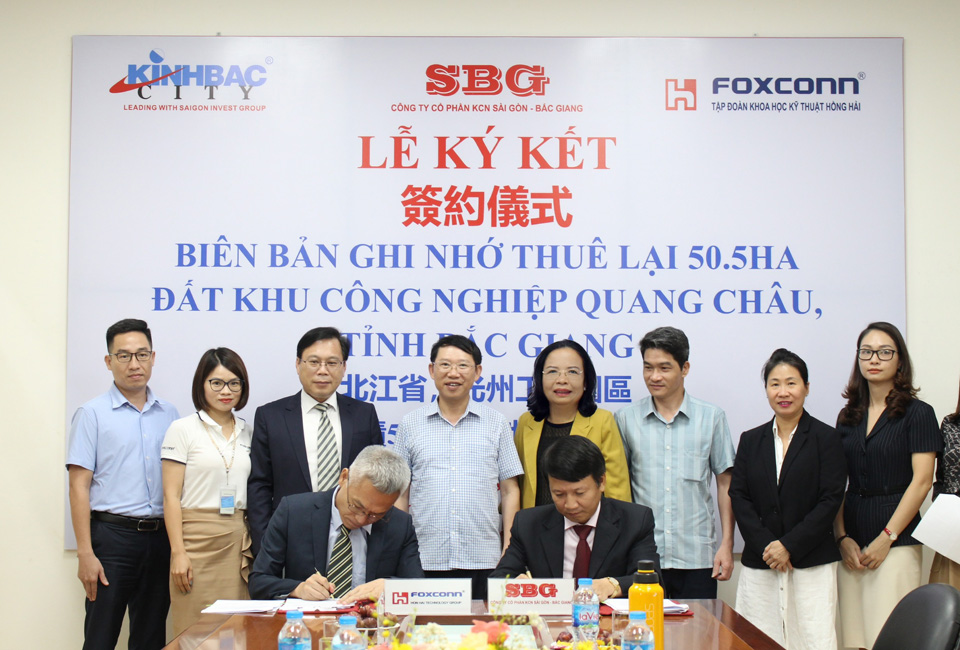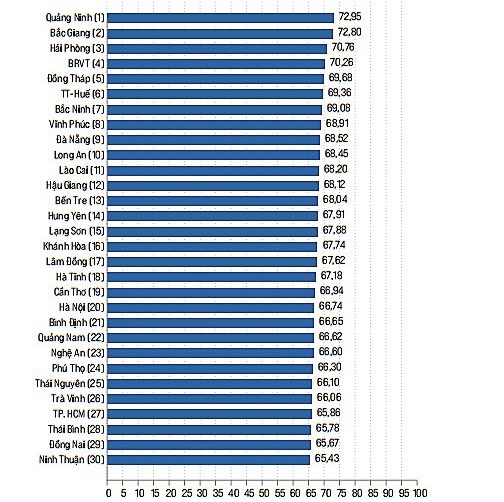The Northern Key Economic Region includes 7 provinces/cities: Hai Phong, Hanoi, Bac Ninh, Hai Duong, Hung Yen, Vinh Phuc, and Quang Ninh. The Northern Key Economic Region currently has 86 established industrial parks with a total land area of nearly 26,600 hectares. Among them, Bac Ninh and Hai Phong are the two provinces with the highest supply in the northern market.
According to JLL’s data, the average occupancy rate in 2022 decreased slightly to 79.1% (-0.9% YoY and -1.2% QoQ), while the average rental price slowed down, reaching $111/m2/remaining lease term (+0.9% YoY and +0.9% QoQ).
Regarding the ready-built factory market, the total supply reached 2.2 million m2 of leasable area (+1.7% YoY) with an average rental price of $4.84/m2/month (+3% YoY and +1.5% QoQ). Bac Ninh and Hai Phong still account for the largest proportion of the total supply in the north with projects from major investors.
The key economic region in the North of Vietnam has been attracting investment waves from global electronics corporations for a long time, such as Panasonic (1991), LG Display (1995), Canon (2001), Foxconn (2007), Samsung (2008), Fuji Xerox (2013), and more recently, groups like Goertek and Jinko Solar. These “queen bees” have brought a wave of industry relocation to Vietnam. According to Cushman & Wakefield, by 2022, the total number of suppliers for Vietnamese enterprises, including both tier 1 and tier 2 suppliers for Samsung, is 250, of which tier 1 enterprises account for 52. This is a significant increase compared to four tier 1 enterprises in 2014. A recent report by ACB Securities Company (ACBS) explained the reasons why these “giants” chose the key economic region in the North as their “base”. According to ACBS, in terms of location, the key economic region in the North is adjacent to China – the world’s largest consumption and production market and near South Korea and Japan – two of the largest investors in Vietnam, more than the key economic region in the South.
In addition, the key economic region in the North of Vietnam borders the southern part of China, including Shanghai, Hong Kong, Shenzhen, Fujian, and Guangdong. These areas are home to giant manufacturing, biochemical, commercial, and electronic technology conglomerates that account for over 30% of China’s GDP. Furthermore, the North is closer to Taiwan, where it contributes 63% of the semiconductor material supply and produces 73% of the world’s semiconductor chips.
In terms of transportation, the key economic region in the North is expected to have more highways than the South. According to the 2030 plan, the North will have 14 highways with a total length of 2,300 km. Currently, the North has 12 highways with a total length of 896 km, including the Van Don – Mong Cai highway (80km) that connects with 3 border gates and 3 international airports.
Moreover, the North owns a direct road and rail link to Shenzhen, also known as the “Silicon Valley” of China. The total volume of goods transported by road in the North is twice that of the South. Meanwhile, the key economic region in the South has a competitive advantage in sea transportation.
In addition to highways, the North also has an advantage in air transportation. The North has 7 airports, including Noi Bai, Van Don, Cat Bi, Tho Xuan, Vinh, Dien Bien, and Dong Hoi. Among them, Noi Bai International Airport has a cargo terminal with a capacity of 403,000 tons of cargo per year, serving 66 airlines (compared to Changi Airport in Singapore with 99 airlines).
In 2021, the amount of goods transported through Noi Bai Airport was 0.7 million tons, three times that of Tan Son Nhat Airport. Due to the nature of their products, manufacturing conglomerates often choose to transport goods by road or air rather than by sea.
Another advantage of the key economic region in the North is that the land clearance process is less difficult than in the South because farmers cooperate more and are more willing to become workers. Rice cultivation is also more concentrated in the North, while it is more scattered in the South. The population density in the North is also higher.
Furthermore, land rental prices in the North are lower than in the South. As of the end of 2022, the average rental price in the key economic region in the North was USD 111/m2/remaining lease term, while in the South, it was USD 126/m2/remaining lease term.


